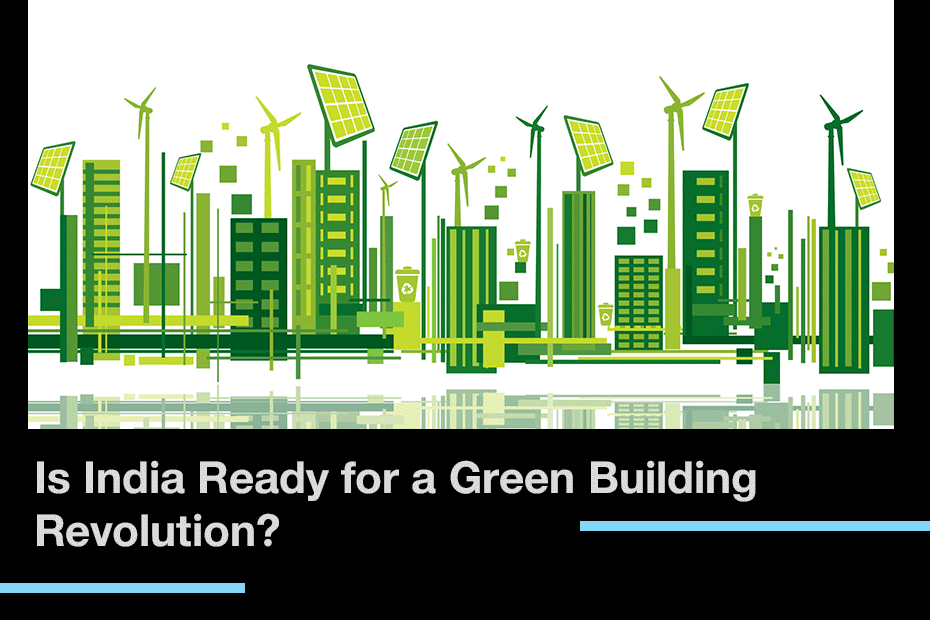Exploring the Future of Sustainable Construction in India
As India strides towards a sustainable future, the green building movement has taken center stage. Driven by environmental consciousness, economic benefits, and government initiatives, this revolution is transforming the construction landscape, promoting energy efficiency, and resource conservation.
Market Dynamics and Key Statistics
- Phenomenal Growth: With a green building footprint exceeding 4.53 billion square feet as of 2023, India is establishing itself as a global leader in sustainable construction.
- IGBC’s Dominance: The Indian Green Building Council (IGBC) commands 90% of the certification market, setting high standards for sustainable practices.
Government Push: Initiatives like the National Building Code, Smart Cities Mission, and expedited environmental clearances for pre-certified projects are driving the green building agenda.
Who's Leading the Charge in Green Building?
- Innovative Designs: Architects are pioneering passive design techniques, enhancing energy efficiency, and promoting water conservation.
- Eco-Conscious Choices: The selection of materials with low embodied energy and minimal environmental impact is crucial.
- Nature Integration: Biophilic design, which integrates natural elements, is gaining traction and enhancing occupant well-being.
- Balancing Act: Achieving a balance between aesthetics, functionality, and sustainability remains a significant challenge.
Builders: Stewards of Sustainable Construction
- Green Practices: Builders are increasingly adopting sustainable construction techniques, including waste management, energy-efficient equipment, and low-VOC materials.
- Certification Edge: Achieving green building certifications like LEED or IGBC offers a competitive advantage.
- Supply Chain Integrity: Ensuring materials and suppliers meet sustainability standards is essential.
- Challenges: Higher initial costs and a shortage of skilled labor are ongoing obstacles.
Interior Designers: Custodians of Healthy Indoor Spaces
- Sustainable Materials: Focus on using eco-friendly materials, recycled content, and low-emission finishes.
- Air Quality Focus: Prioritize materials with low VOCs to improve indoor air quality.
- Energy Efficiency: Incorporate energy-efficient lighting and appliances.
Waste Reduction: Aim to minimize waste through efficient design and material selection.
Manufacturers: Innovators in Green Building Materials
- Product Innovation: Developing materials with reduced environmental impact is a primary focus.
- Certification Goals: Achieving eco-friendly product certifications is vital for market success.
- Life Cycle Assessment: Evaluating the environmental footprint of materials throughout their lifecycle is crucial.
Complex Balances: Balancing cost, performance, and sustainability remains a complex issue.
Navigating Challenges and Harnessing Opportunities
Tackling Higher Initial Costs
Green buildings often require higher upfront investments compared to traditional structures. However, the long-term benefits, such as reduced operating costs and increased asset value, justify these initial expenses.
Bridging the Skills Gap
The shortage of professionals skilled in green building design and construction is a significant hurdle. Enhanced training and educational programs are essential to address this gap.
Effective Policy Implementation
Ensuring the effective implementation of government policies and incentives is critical for sustained growth in the green building sector.
Raising Market Awareness
Increasing awareness among clients and consumers about the benefits of green buildings is vital to drive demand and encourage sustainable practices.
Seeuccess Stories: Green Building Icons in India
- CII-Sohrabji Godrej Green Business Centre, Hyderabad: A LEED Platinum certified building showcasing sustainable design principles.
- ITC Green Centre, Gurgaon: Another LEED Platinum certified structure highlighting potential energy and water savings.
- Patni (i-GATE) Knowledge Centre, Noida: A prime example of sustainable office building design.
Shaping the Future: Trends in Green Building
- Rising Green Standards: An increasing number of buildings are expected to achieve green certifications.
- Net Zero Buildings: The industry is moving towards structures with minimal or zero net energy consumption.
- Renewable Integration: Solar and wind power will increasingly be integrated into green buildings.
- Circular Economy: Emphasis on recycling and reusing materials will become more prominent.
BSC Interiors: Pioneering Sustainable Change in Construction
BSC Interiors Pvt. Ltd. is at the forefront of advancing the green building movement in India. By offering premium eco-friendly building materials, BSC Interiors plays a pivotal role in facilitating the construction of sustainable structures.
Our Commitment to a Greener Future
- Promoting Green Certifications: We encourage clients to pursue green building certifications by providing necessary resources and support.
- Innovative Solutions: Continuously expanding our product range with innovative, sustainable materials.
- Educational Initiatives: Enhancing market awareness through workshops, seminars, and digital content focused on the benefits and practices of green building.
- Strategic Collaborations: Partnering with architects, builders, and designers to integrate sustainability into every project.
By addressing challenges and leveraging opportunities, BSC Interiors is dedicated to making India a global leader in sustainable construction, contributing to a greener and healthier built environment for future generations.
